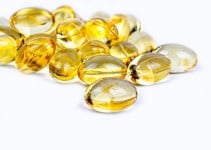Most women are not aware that physical activities can affect their menstrual period. These two events actually have a close connection, and women usually feel more of the effects when they exercise or visit the gym regularly. This happens because the body produces a number of hormones that control a biological process called menstruation.
Most women are not aware of the effect of physical activities on their menstrual cycle. These two go hand in hand with each other and the women, who go to the gym regularly, are more prone to have exercise-induced menstrual irregularities.
Exercising will put physical demands on the body and affect the menstrual cycle and hormone levels in several ways. Keep reading to know more about this as the following article has information on how exercise affects your menstrual cycle.
Menstruation is important because it’s linked to reproduction. In general, the menstrual period, or menstruation, will take place for three to five days, and during this cycle, your body is going to shed uterine tissue.
The very first day of your menstrual cycle will be marked by the first day of your bleeding, and the cycle goes on for twenty-eight to thirty-two days for most women. Estrogen hormone levels will increase in your body throughout the first half of the menstrual cycle. The boost in this hormone will thicken the uterine lining in preparation for gestation or pregnancy. Other changes in hormones will trigger one of your ovaries to release an egg that travels to the womb or uterus for fertilization. Your hormone levels can decrease if fertilization does not take place and this will cause the egg to degenerate and menstruation to start.
How Exercise Affects Your Menstrual Cycle
If you are doing little to no exercise on a daily basis, then you are more likely to have irregular, lengthy, and painful menstruation cycles. The same goes if you’re obese or have a sedentary lifestyle.
If you are doing moderate exercises regularly, this can cause your menstruation cycles to be shorter and less extreme. In simple words, frequent exercise can help you to menstruate regularly.
Too much exercising can put your body under a lot of stress to produce the regular hormones you need to complete your menstrual cycle. When you are exercising, your body is going to enter a survival mode and will shut down functions not necessary for survival, such as menstruation, in order to conserve your energy levels and keep your body going in its existing condition. The body is actually going to hold onto all the energy you have so its important functions can be performed properly.
In addition, a reduction in your caloric intake and intense physical activities can cause menstruation to stop. This is a condition called amenorrhea. Women experience this condition more frequently when they are taking part in bodybuilding, distance running or extreme fitness activities. You could also have this condition if you are participating in various other sporting activities such as ballet dancing, gymnastics, and figure skating, all which put emphasis on slimness.
Women with amenorrhea generally experience a constant energy deficit, and this ultimately causes the hypothalamus to discharge less of the hormones responsible for regulating the ovarian function. Your period will stop or pause if your ovaries do not release an egg for fertilization. It is important to take good care of yourself in order to avoid amenorrhea because a woman’s body is made to menstruate until she gets pregnant or reaches menopause. Besides that, it’s important for you to menstruate monthly because the uterine lining will shed during this time.
You should have a discussion with your doctor if you are concerned about menstrual irregularities, such as missed periods due to exercising. If you are experiencing long periods of amenorrhea, this might cause your bones to lose calcium, which results from decreased levels of estrogen. This could lead to loss of bone mass loss, as well as osteoporosis and broken or fractured bones over time. Amenorrhea treatment usually involves increasing caloric intake and decreasing physical activity.
Before closing, you should know that there are some ways you could benefit from exercise. Moderate physical activity can improve a number of the severe side effects associated with menstruation, including vomiting, uterine cramping, back pain and nausea. These symptoms are more likely to develop as the uterine lining discharges the prostaglandins hormones, which reduce the blood flow to the uterus and trigger agonizing uterine contractions. Your body will increase the blood flowing to the uterus when you exercise and boost its creation of endorphins, or feel-good hormones, which might counter the effects of prostaglandins, thus inducing pain in some women.
You could get relief from menstrual cramps while doing activities such as stretching exercises, resistance training, and cardiovascular workouts. In addition, you could benefit from fitness classes or routines that include yoga, Pilates, or dancing water aerobics.
Conclusion
It is important to know how exercise affects your menstrual cycle if you want to maintain optimal health, whether you have an active or sedentary lifestyle. Consult your doctor if you suspect that your menstrual irregularities are linked to your physical activities.
References



